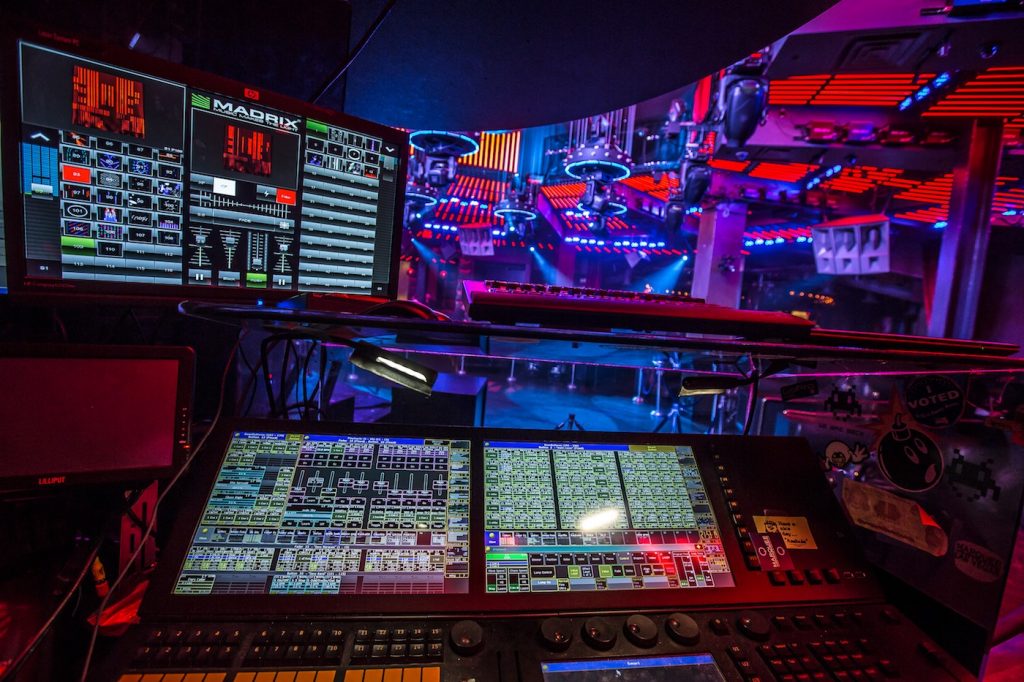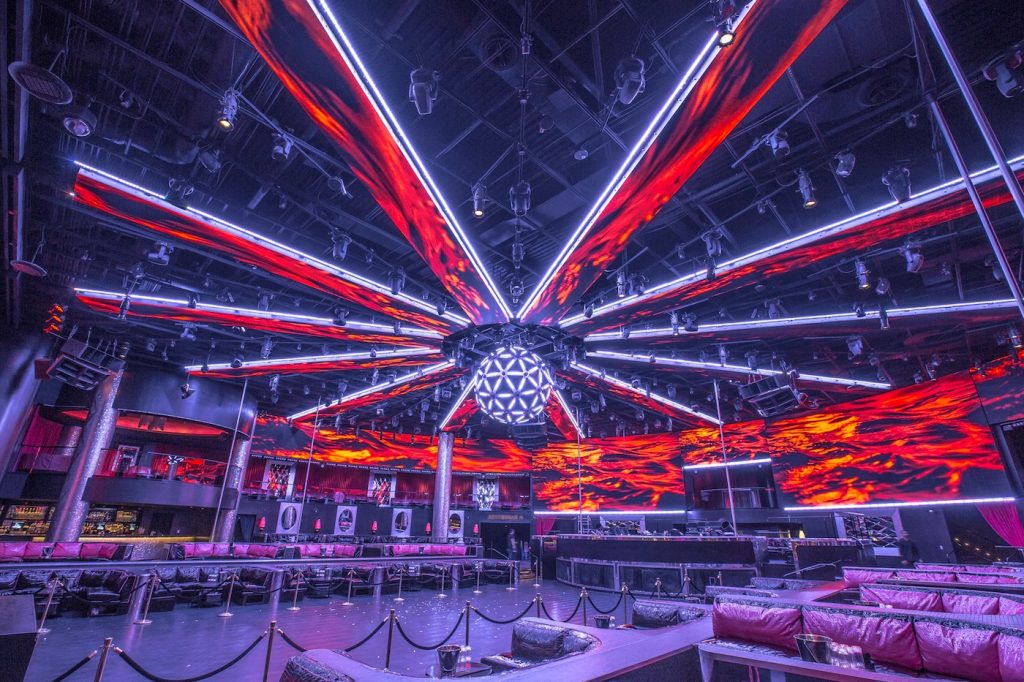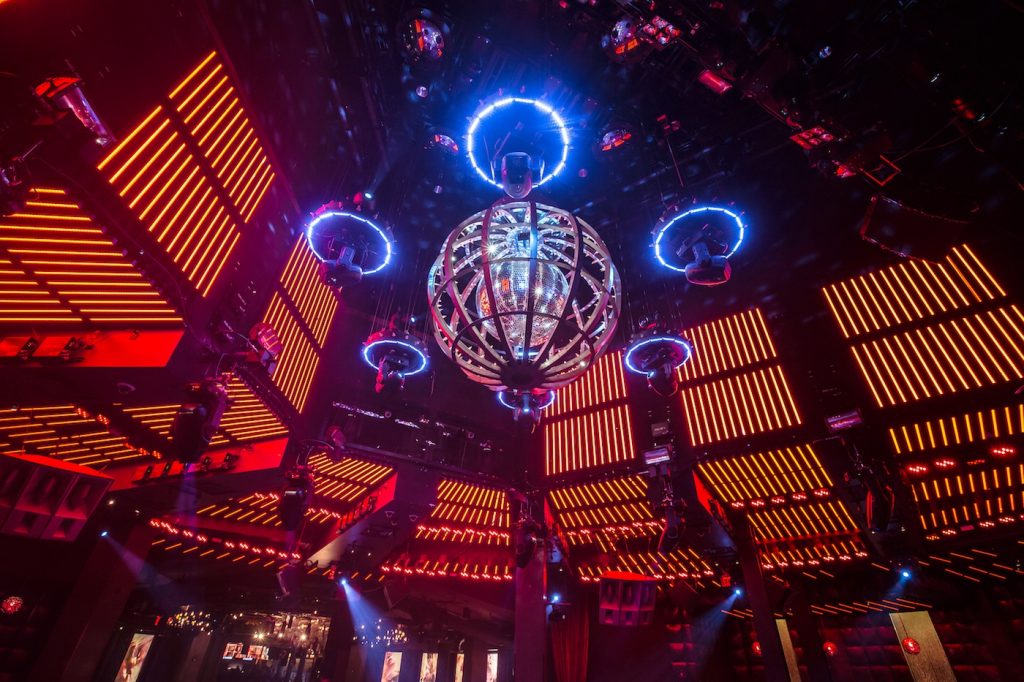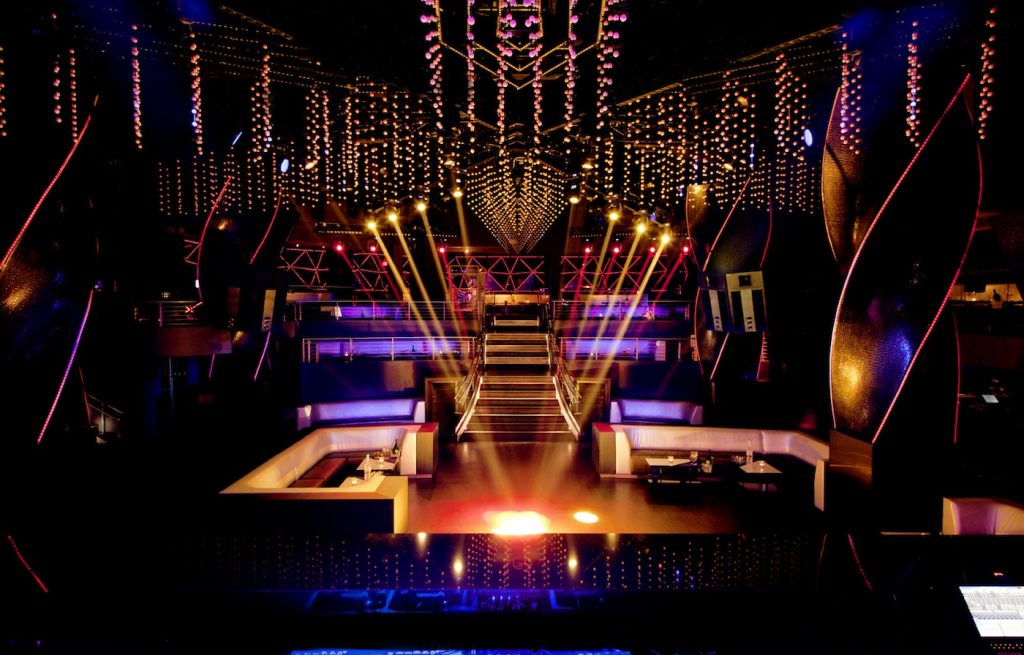Installation 033 — Steve Lieberman
By Dani | NEST HQ
September 09, 2016

NEST HQ was created with the intention of being a platform aimed at promoting and encouraging the growth of artists of all genres and mediums. While we've worked mostly within music up to this point, we are expanding on a new content series that will showcase multimedia artists of various backgrounds including painters, graphic designers, architects, and others of the sort; this is installation. Every week, we'll post hand-selected pieces from our featured artists via our Instagram @nesthq, along with excerpts from the full interviews which will be posted on the Friday of that week.
This week on installation, we present the lighting design wizard, Steve Lieberman. Steve is the main designer behind Coachella's Yuma Tent, Ultra Music Festival's Mega Structure, several of Las Vegas's most prestigious night clubs, and much more.
Can you tell us a bit about how your story as an artist began?
My first job in nightlife was either 1986 or 1987. I worked as a barback at La Plage nightclub in Hampton Bays, NY. Even though I was cleaning glasses and refilling juice and liquor, the whole environment intrigued me. It truly was a spectacle, and to a 15 year old kid… it was a fantasy world. I can recall every inch of that club, from the dancefloor, to the outdoor patio, the basement, the liquor room, and the DJ booth 20' above the dancefloor. There was a wooden ladder going up through a hatch to enter the booth and once inside, you saw the entire dancefloor. What an amazing perspective. It was my first real experience inside a club… and inside a DJ booth. The lighting was controlled from simple wall switches… on/off… controlled mirrorballs, pinspots, helicopters, backlights, and strobes. The audio was what you'd expect, technic 1200s with a Urei mixer.. a reel to reel machine and other equipment that most current artists have probably only seen in pictures, if at all. I had no idea the door I was opening… that this was a premonition into my future… but, from then on, I always knew that I wanted to be involved in nightlife entertainment. Somehow, this evolved over the years, but it started from a very simple place.
The more critical years really came much later, immediately after high school. Raves had just hit New York, and it was a completely new culture that had emerged. Crossing between the nightclub world and the underground community where all night dance parties were growing in popularity, I attended these events with friends who were involved on the lighting and production side of things. I helped out however I could to get lighting equipment set up for the show. The extent of my help usually equaled the fact that I had a small truck that we could put gear into.
Summers during college were spent in NY… I worked with friends setting up raves and also doing basic work at installations of nightclubs – I really had very limited knowledge of how anything worked. this was really the beginning of what is now a successful lighting career. I was exposed to the infancy of the technology boom that encompassed the nightclub community till present day. After graduating college, taking my LSAT exams, and preparing to apply to law school, I had an epiphany: I don't want to go back to school… I'm going to head to NY and work in nightclubs… saying it out loud really sounds like a terrible idea. Fortunately, it worked out. Fast forward 22 years… here we are.
At what point did you realize that art was something you'd be doing long term?
It wasn't an immediate reaction, but it did happen pretty quickly in the story of my career. Before I went out on my own, I worked for a company in NYC that installed lighting systems into nightclubs and setup shows. I was initially hired to do sales… they didn't have anyone dedicated to that… I had no experience doing anything… so regardless of what I did, I was starting at the bottom. The primary focus of this company was not design work, but contracting the equipment and setting it up. I took an immediate interest in how the equipment was laid out and began doing my own layouts on my own time. I remember getting a call from a club in Ohio while I still worked there; I must have spent a month working with this client, laying out his system and detailing how it all went together… and in the end, he didn't contract me for anything… lesson learned… What I did figure out after that, though, was that the design side of the industry had a much clearer perspective for me… I was able to visualize what the design should be, and how it would react. It's been a daily learning process since then developing my skills… and not a day goes by that I don't learn a new lesson, big or small.
What is the reason for the medium you chose to become proficient in? What does this medium allow you to do that other mediums may not?
Initially, when I started in the business, it was all about lighting… no video, no scenic… we setup “light-shows” and we were finding success there. As technology evolved, so did the design work. We began taking in the bigger picture… it wasn't just lighting anymore… video screens, lasers, pyro, and special fx… and eventually all things stage and production design related. So the medium that [I] work in encompasses all things production design related. Ultimately, if you see it on stage, chances are it started off as a concept sketch in our office.
Lighting design is a really interesting crossover of visual and technical artistic application; in many cases, the final product must be as visually stunning as it is technologically sound. Can you talk a bit about how the tech aspects of your work help mold your visions for final installations?
This is one of the things that really delineates production design from other more traditional art forms. While we are always trying to create a visual spectacle, there must be an understanding of the engineering, the power requirements, accessibility of resources, and timeframe to install it. It is a delicate balance of art and science. Will we get out of it what we need? Does it suit all the needs of all the artists performing on stage? Understanding the industry, what's current, what's upcoming is a constant work in progress; it's necessary to really stay involved in the industry, to communicate with peers, manufacturers, read the trade magazines, and be innovative with both old and new technology. I've always said that the technology is secondary to the design. Application and execution of design work is primary; the technology supports design but can be substituted out without diminishing its integrity.
What kind of mindset do you work in when designing an environment? Are you looking to capture the brand of the club/venue, or perhaps looking to create a space that is emotionally exciting for the music that gets performed there?
Designing clubs is one of my greatest passions. That said, I have a very specific philosophy on my approach. Embrace the space as it is. The architecture does not bend to fit the needs of the technology — it is the complete opposite. When looking at a space and coming up with what works, I always start with the very basic concept of highlighting the geometry of the environment. From there we work in the details. Technology needs to reflect the overall vision of what the environment is, and it needs to make that space exciting. I try to create designs that evoke a response — something tangible. Getting an emotional response from the audience means everything. I want the crowd to feel the heat from the lamps… to take a step back when the lights hit them… to have the hair on the back of their necks standup during special moments… and creating a system that is capable of doing that is a collaboration between art, technology, engineering, and fiscal responsibility.
What were the inspirations behind these 3 pieces specifically?
The centerpiece at Drais in Las Vegas was probably the first of its kind in a nightclub, at least to my knowledge. We really wanted to create something spectacular, over the top, but clean and precise. I spent a long time considering what it should be; as a designer, it's important to step away from what you're doing and clear your mind. When I came back to it, I was looking at images of 3D spherical objects online and I came across an image of a soccer ball. I took that image and reworked it to suit the needs of the club. Eventually, it evolved into an “octocontagon” … which is a fancy way of saying 80-sided polygon. It has 80 discrete custom LED screens, edge lit with LED lighting – each intersecting point has a beam light. Additionally, it is motorized for up/down movement. The item was so large, that when we brought it into the building, we had to crane it onto the roof from Las Vegas Blvd.

Premier nightclub at the Borgata in Atlantic City has one of the most fantastic mirrorballs that I've ever been able to even dream up. The mirrorball, for me, is one of the most iconic, quintessential images that evoke the sense of “discotheque.” So, how do you take that image, something which in my opinion is already a pure concept, and take it to another level without it looking silly. The initial concept was to do a huge mirrorball – 6ft diameter, surrounded by a chandelier of LED strings swagged like strings of crystal. I wanted to make the mirrorball unique, and not just a traditional glass orb. We decided to you use black glass instead of silver, this by itself made the ball look like a beautiful black sapphire — really changes the perspective when you see this. Additionally, we designed over 1500 lights into the ball: RGB color changing, white lights, and strobe lights. We used LED software to map all of it and added the additional LEDs from the swagged chandelier detail into the programming. The effects are stunning. And the final element, since it's still a mirrorball, it must rotate… so, the centerpiece goes up and down… including the swagged detail… and the mirrorball rotates continuously.

The centerpiece at Story in Miami is a dominating visual centerpiece in the club. One of the more difficult designs I've produced, but in the end produced stunning results. The layout of the club is asymmetrical with columns that don't align the dancefloor. So when we laid this out, we had to find the lowest common denominator… the most difficult area in the space to work in and move forward from there. The centerpiece is actually the result of taking the negative space of my initial design for the club… so essentially, I did the exact opposite of what I initially conceived. The chandelier is nearly 80' long and 40' wide… 3 dimensional on all 3 planes x/y/z. The system is mapped in 3D software that creates stunning visual effects and creates a unique geometry that is overwhelming. Monolithic would be a word I would use to describe this pieces — it's massive. It resembles the North Star. The club has now been operating successfully for a couple years and this piece has stood the test of time.

How do you feel the industry is doing right now? Which trends are really pushing the industry forward, and which are holding it back?
The industry is strong… however, like any moving object, there are shifts in where technology and trends lead us. The most obvious is LED. While it has been around for years, the evolution of where it is now is amazing. Smaller, faster, brighter, better CRI (color rendering index), less power consumption, and equally if not more important than anything else is price is dropping. This means that it is more accessible to do projects that couldn't fathom installing LED video screens or large format LED lighting installations. All of this is coming within reach. One of the greatest things about this industry is that really the only thing that holds it back is imagination. It's a landscape that's based on creative. That's what makes it flourish, and the lack of imagination is the only thing that I see inhibiting it.
What are some other artists that you are currently into?
I love all forms of art, from French impressionism to cubism; architect John Lautner is a great inspiration for me. His work exemplifies harmony within an environment, and it makes sense being that he is trained by Frank Lloyd Wright. Lighting artists James Turrell's work is magnificent in its simplicity. I'm constantly observing my environment, looking for inspiration. These are just some of the standouts.
What are some of your goals for 2016?
We've been expanding a little bit over here. I just took the space next to our current office and broke down a wall. Hiring another employee starting next month. Really trying to be more efficient with our time. I'm extremely grateful for the opportunities to work on amazing projects around the world. The more my company does, the more I try to give back to the community. Whether speaking at seminars and offering advice on how to work in the industry, or hiring friends and colleagues to participate on jobs with me. I truly love being part of the bigger picture. It's been a gift. Most importantly, everything I do is for my family, my wife Michele and children Sophia and Jack. Without them, none of this is possible.
Why did you choose these pieces to represent yourself on this spread?
Overall, the work illustrated in our current catalog/portfolio represents our standout achievements over the past several years. While it doesn't show every job we've ever done, it covers some amazing clubs and shows… and we have good photos of them. Unfortunately, in the past, we did not always have the foresight to truly understand the importance of documenting work through photography. We are much better about that now.
